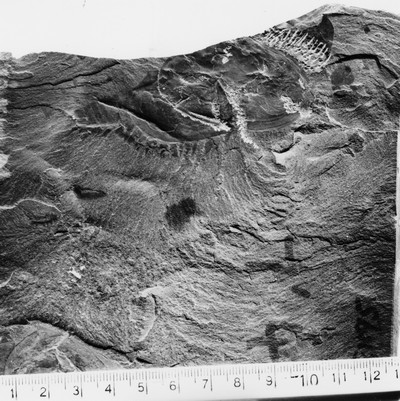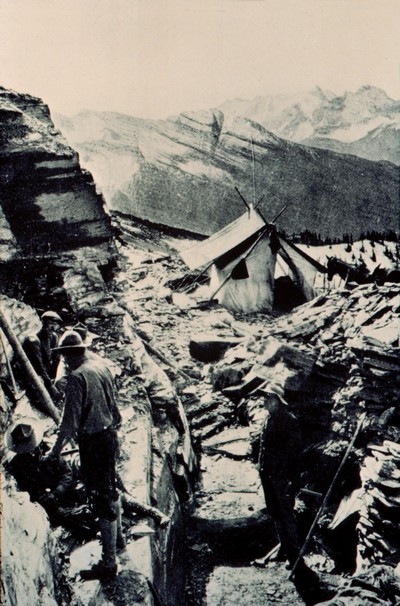The Burgess Shale in British Columbia’s Yoho National Park is one of the world’s most important fossil deposits, providing an intriguing glimpse of the diverse and unusual marine life of 505 million years ago. It is especially renowned for the superb preservation of soft-bodied animals, including arthropods, sponges, and worms, that would otherwise be unknown.
Fossils in the Burgess Shale area were first noticed in the late 19th century, probably by workers building the Canadian Pacific Railway. In 1886, the Geological Survey of Canada’s Richard McConnell, while unravelling the geology of the Canadian Rockies, confirmed the existence of abundant fossils on Mount Stephen, which is near the main Burgess Shale site. Study of the fossils was begun in the late 19th century by Canadian paleontologists, such as the Survey’s Joseph Whiteaves, who described one of the Burgess Shale’s most iconic fossils, Anomalocaris, in 1892, from a partial specimen.
In 1907, the American paleontologist Charles Walcott travelled to Mount Stephen and, during his studies, discovered and named the Burgess Shale site. Another American paleontologist, Percy Raymond, worked there in the 1930s, and starting in the 1960s researchers from the Survey, Cambridge University, and the Royal Ontario Museum carried out major studies.
Category: Rocks, Fossils, Minerals and Meteorites
Decade: 1880s



